Text

We need an economist version of ritual suicide because authentically I don't know how you go on living after dishonoring math like this - in public no less!
1K notes
·
View notes
Text
one of the most infuriating things about becoming an adult is when you realize that it actually is 10x easier to solve problems by making a phone call vs literally any other communication method
117K notes
·
View notes
Text
"Rationalism" is up there with "Objectivism" in terms of "definitionally funny things to call your own belief system".
38K notes
·
View notes
Text
highly recommend keeping a small portrait of a historical figure who met a grisly end on your work desk. for perspective.
63K notes
·
View notes
Text



'Republicans graduating from law schools' have invalidated the Constitution, due process, and habeas corpus all to not offend First Felon and his highly illegal and morally devoid policies.
This is human trafficking. Always a projection.
8K notes
·
View notes
Text
I am very disappointed that this was only a dream, as I very much want to read this. Not least because if you swap naval warfare for European land warfare and the dawn of colonialism, that's not a million miles away from something I'm working on...
Dreamed I found a book that was only incidentally fiction (the author had a James Cameron-for-the-Titanic level obsession with the forensics of naval warfare in the 1800s, and his work was more factually accurate than most textbooks on the subject). It was also written very much in the style of Daniel Handler and maybe a little 2017-era PhilosophyTube. It wasn’t quite YA and it wasn’t quite not-YA. It was genre fiction but for a genre that didn’t exist. It was very ‘whump’y and had a deliciously terrible villain organization as the bad guys. Imagine Gormenghast written by an autistic fandom adult STEMlord Lemony Snicket. It was a series the publishers thought was going to be the new hotness but never ended up developing a LoTR or Harry Potter-level fandom as predicted. It just had a few dedicated deeply weird fans. Anyway I dreamed I stumbled on the series in a used bookstore and I loved it immediately. I got into the books hardcore and I told my most well-read coworker and he was delighted and surprised because I was the only other person he knew who heard of it.
18 notes
·
View notes
Text
The Permaculture Spiral Garden - A Great Starting Point
There is probably no other structure as popular for illustrating Permaculture in practice as the Herb Spiral. Okay, I guess I could mention the lasagna sheetmulching method or also the cob oven that tends to be the first hands-on project at a typical Permie intro session. But when it comes to showing how landscape design, zones and sectors, stacking functions, and efficient use of space and water come together in one unique structure, the Spiral Garden is unbeatable.
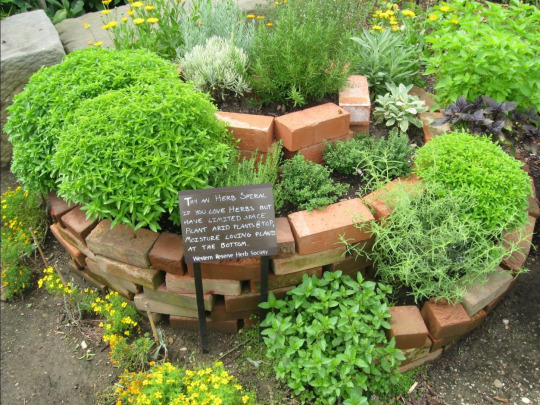
Turning Theory into Practice
In typical Permaculture Designer Certificate courses, but even in brief intro weekends to Permaculture, there tends to be a lot of theoretical discussions. Since the numerous design principles can be applied to any climatic region, from the tropical to the subarctic, and on any scale from the humongous to the tiny, the practical aspects of the ideas can easily get lost. That's where a good hands-on application comes, where the participants get to move around rocks and dirt, while realizing how much it ties in to the concepts they've just discussed. This way the apparent "main purpose" of "building something to grow all your kitchen herbs on", becomes a neat side feature.
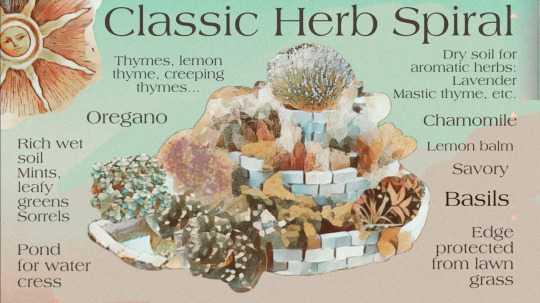
Adjust Your Landscape!
The first thing to realize that landscape is welcome to be modified and adjusted to bring out the best in it. Clearly, while it is important to work with what's there already, it doesn't hurt think about mounds and valleys. And before you bring out the excavators for your large-scale farm, it makes sense to start small… say on a circle of 2-5 meters (6-16 feet) diameter. In other words, the Spiral Garden is a hill with a spiral shaped surface, leading down to ground level, or further down into a water hole. It can be made out of rocks, bricks, concrete debris, or anything else you have lying around that can hold your soil.
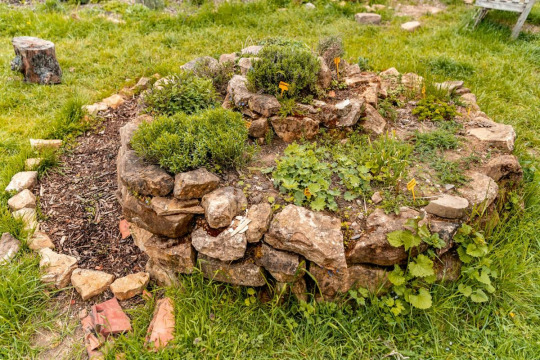
Design According to Your Scale
Looking around for existing Herb Spirals it's easy to get confused. Some are so big you can actually climb on them (that is, you have to in order to reach what's growing on top). Others are so tiny that you may not even want to step on them. The question is: which size is the right one for you? Since this is something you will have to decide almost daily in Permaculture, it doesn't hurt starting out with this important question.
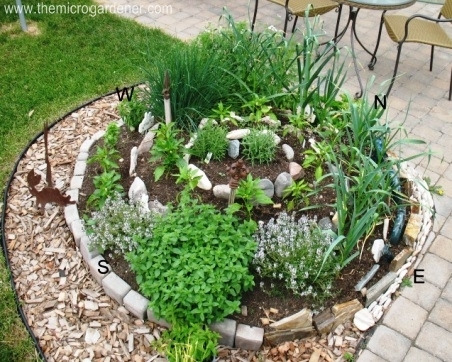
Organizing Your Spiral Garden
While there are seemingly endless types of Spiral Gardens, there are a few things they all have in common: They all start out with a region on the top, where water is bound to run off right away, leaving the soil relatively dry. This area is also the most exposed to the wind. Keep this in mind when choosing the plants that are going to live here. Ideally, the spiral should start sloping toward the East from here. Delicate plants that benefit greatly from the morning sun will appreciate this region. As the slope continues toward the South and West, it becomes more suitable for sun loving species. Finally, as the spiral reaches the ground level in the shady Northern part, it will be perfect for herbs that prefer less sun, more shade and more water, since the soil tends to be wetter here. (Note: This is for the Northern Hemisphere. In the Southern Hemisphere North and South are reversed.) To make full use of the runoff water, many people add a small pond at the base of the spiral, where additional aquatic plants, such as watercress, can be grown.
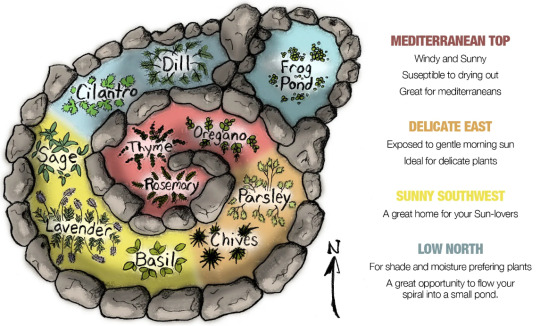
The given illustration offers a good number of herbs for a nicely diverse kitchen. Depending on what else you want in your Herb Spiral, you can add it in the most suitable region. Mint and lemon balm love the cooler, shady part with more water. Lemongrass is great in the sunny area, and tarragon and estragon prefer the dry top of the spiral. Of course, the idea is not limited to kitchen herbs. For maximalists, the same theory can work with a mountain you might want to terraform into a spiral farm. But right now I'd prefer to stay small scale.
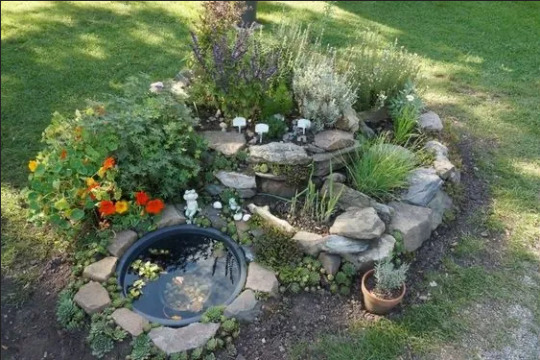
Plenty of Benefits (That's Why It's Permaculture)
As explained above, the main purpose of the Spiral Garden is not only to increase your gardening area by making use of the vertical, but also to create diverse climatic conditions, which do make a difference on the smallest scale. But as Permaculture tends to be, there are many other benefits to it. The structure itself offers great habitat for numerous animals, such as frogs, salamanders, lizards, but also pollinating insects, and of course others that may not directly benefit us, but by feeding on others they all add to the stability of our ecosystem. The structure itself will suppress weeds and make use of material that you're not likely to use elsewhere. Finally, depending on the size and location, it will be an ideal place to grow all your kitchen herbs right where you can access them most easily.
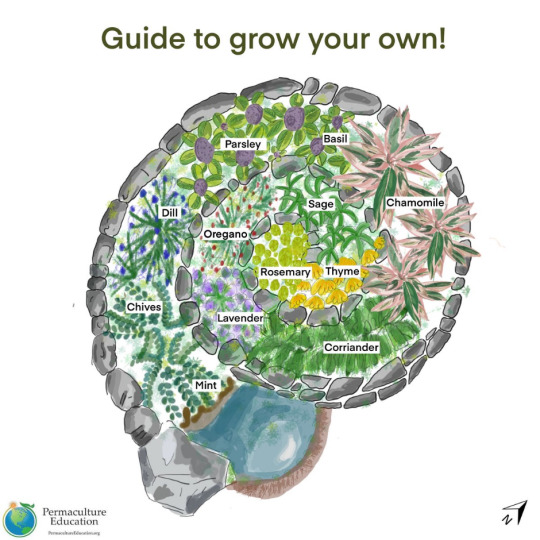
Some Things to Keep in Mind
When building the structure, make sure it will contain the soil in a nice trough, slanting slightly inward. That way bits and pieces that fall off will roll towards the center, until contained by the main mound.
Make sure the slope is always nice and gradual, avoiding sudden drops where the water can rush down quickly, eroding the soil.
If you're going to walk on your spiral, include a separate walkway that won't compress good soil. Most importantly, it should be sturdy enough to provide stability and make access safe.
Don't forget that while the structure is important to keep the soil in place, it is the soil that you'll be growing plants in. So it should have a good depth of 20-50 cm (8-20 inches) throughout the entire spiral. This can be the trickiest part!
Apply your own observation to which plants do better in which parts of the spiral. Also, with time you will find many other plants growing in it that you didn't plant. Before removing them, consider how much they actually bother your herbs, and whether their benefits may not outweigh their drawbacks.
Go Out and Build Your Own!
I hope this brief overview got you inspired to go out and try building an Herb Spiral yourself! I would love to hear your experiences with it!
Sources: 1, 2, 3, 4
3K notes
·
View notes
Text
i was so sad, i drew a little bat so i wouldn’t be sad. and now i am no longer sad.
155K notes
·
View notes
Text
Listen if the study of ancient humans doesn’t make you at least a little bit emotional idk what to say.
I started crying today at the museum because they had reconstructed the shoes of Otzi the iceman.
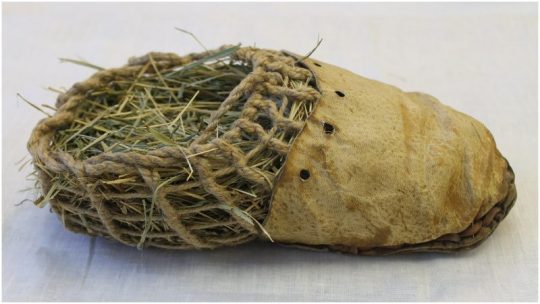
Either he or someone he knew who cared about him made these shoes out of grass and bear skin and twine and he was wearing them when he died over five thousand years ago.
And a Czech researcher and his students did reconstructions of these shoes and wore them to the same place where he died to test them out and they were like yep! These shoes are really cozy and comfy and didn’t give us blisters while hiking!
Is that not just the coolest shit ever????
99K notes
·
View notes
Text
Concept: cursed blade rehabilitation center. Destroying a sentient weapon is expensive and highly unethical, so adventurers bring them to the center where highly trained staff can care for them and eventually find them forever homes. It turns out most cursed weapons are products of trauma and are not strictly evil themselves. Some blades turn out to be fiercely protective companions. Others don't even want to be weapons at all, finding joy in simple work like blacksmithing or farming. Most blades just need to be loved.
39K notes
·
View notes
Text
You know, rivers catching on fire used to be a regular occurrence.
50K notes
·
View notes





